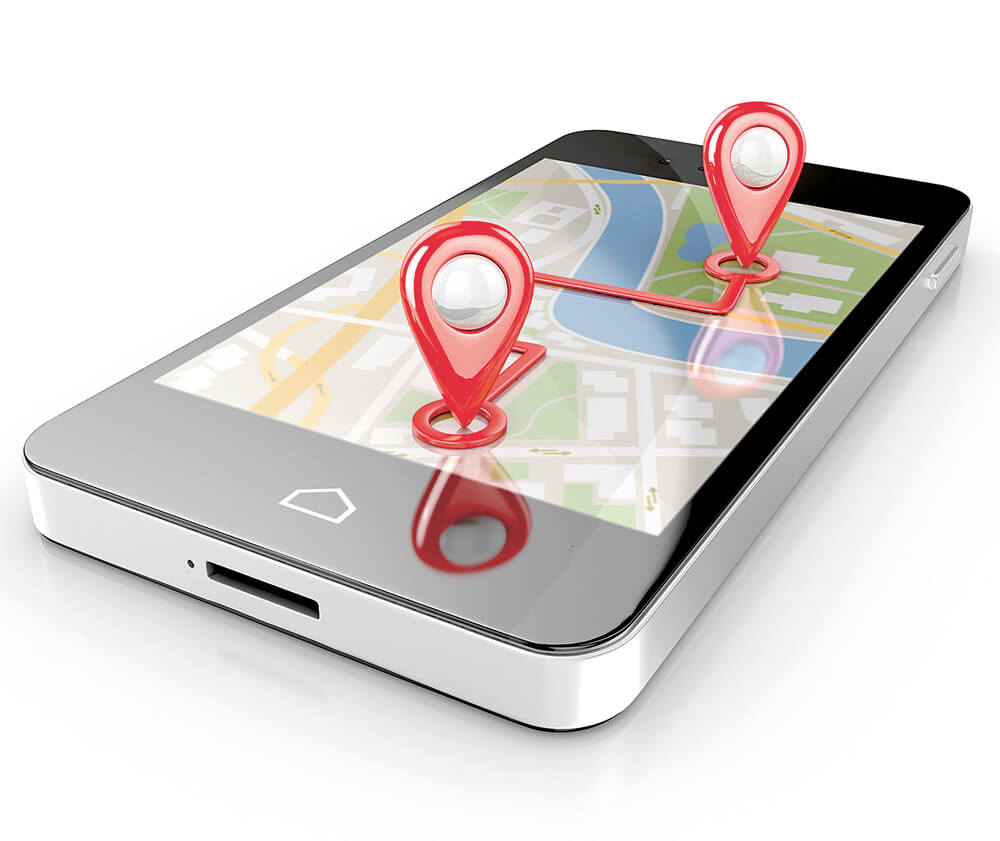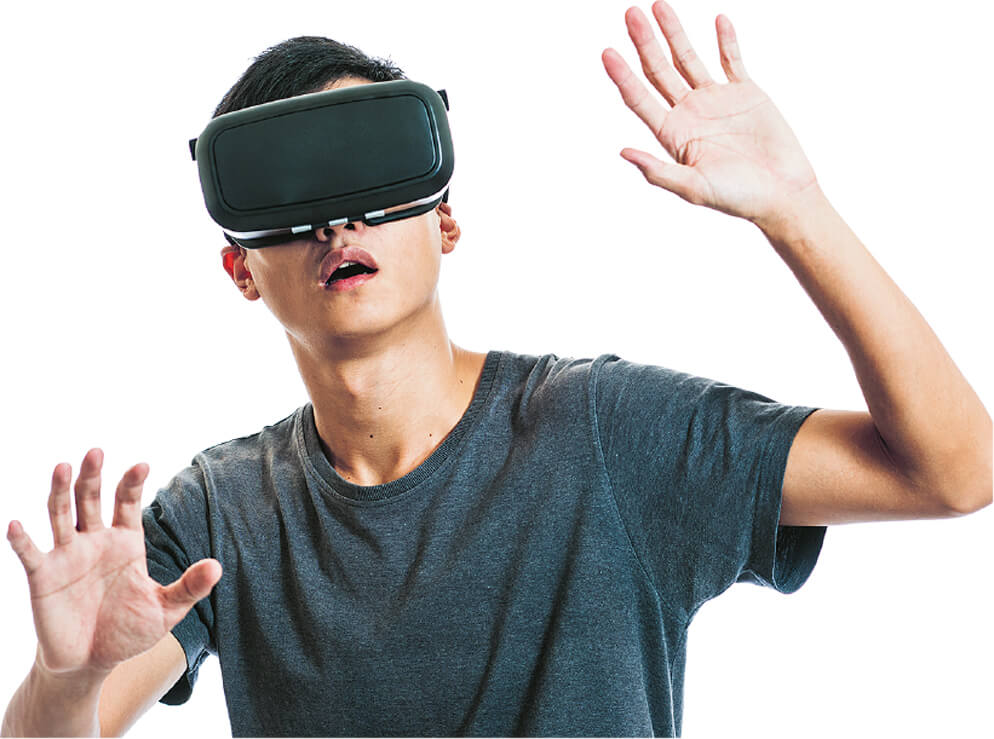Play your card
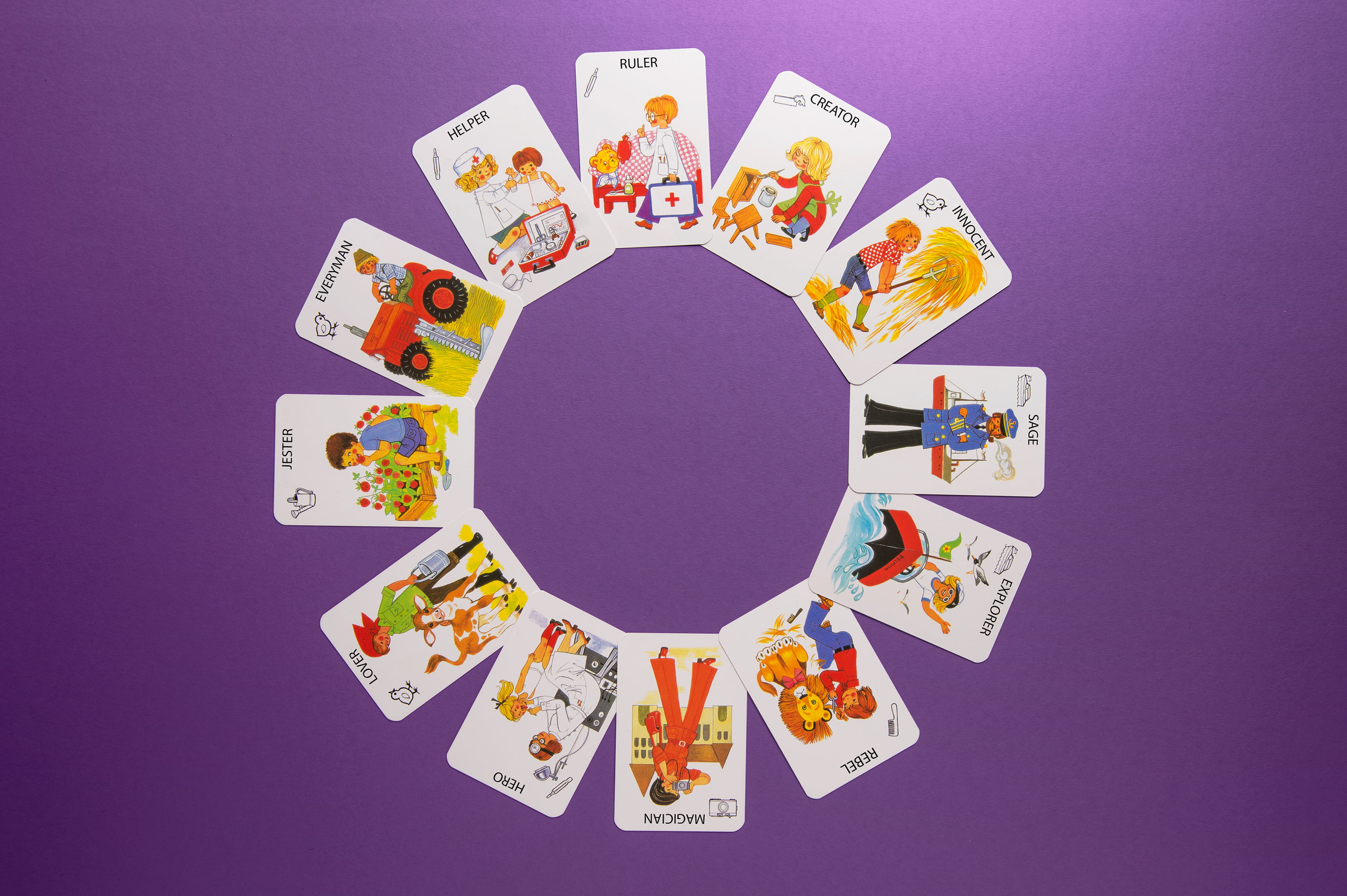
Play your card
The Hero, the Ruler, the Jester. Archetypes can be powerful tools when building a brand. Facebook and Google have proved just how powerful.
How did two of our times’ strongest brands build their success? Grown out of American college campuses, with organizations packed with engineers, Google and Facebook have achieved iconic status over a short period of time in virtually all parts of the world – creating strong brand positions without spending vast amounts on marketing.
An obvious answer to these questions is that Facebook and Google have created unparalleled digital experiences that are hard to ignore for anyone exposed to them. They have certainly faced many competitors, but they have prevailed through consistently delivering on the most important criteria of their categories. But their brands also show strong archetypical traits, and that helps explain their consistency and global appeal: Iconic brands often play on archetypical references, and even though a lot of them are very complex and multifaceted, the most iconic ones are those that seem to be concentrated on just one.
“We can go back to basics”
Archetypes are powerful symbols, roles, characters and stories that transcend time and culture. Or as Carl Jung explained: “forms or images of collective nature which occurs practically all over the earth as constituents of myths and at the same time as individual products of unconscious origin.” We can say that we all know them and understand their meaning. And it makes a lot of sense when you think about it: in India, Denmark and Uganda, people will understand the archetype of the Hero, the Mother or the Ruler. At the simplest level, we all understand the various symbols connected to them. Facebook and Google have been consistently projecting the most important features of their archetypes and have brought them into this unknown landscape of the Internet.
Facebook’s core
Facebook presents the same interface to everyone, encouraging you to be open and honest, celebrating participation and ensuring that you are connected at all times and on all possible devices. At the core of the Facebook brand you find this complementary connection to the elitist origins of the product: the Harvard campus. Facebook was never intended as an opposition to the established structures of social life, it was always about creating a positive, engaging and simple way of just being a person. The most prevalent symbol of this thought is the “like” button – a brutally simple way of “paying it forward”. Facebook was, and still is, a social brand. It is always there for you and that is the true value to the The Everyman archetype.
Google is founded on an idea that you can create a better reality for yourself right now – the Internet is easier to use, safer and less complicated in Google’s sphere. The brand has so many archetypical traits of the Innocent that they are hard to ignore: Often a simple, almost naive user interface that was in stark contrast to the chaotic, stereotypical and technological competitors at the time, a name and logo that seems childish and welcoming (even the two O’s can be argued to give deep references to the eyes of a small child – a symbol also pointed to the face of the Volkswagen Beetle), the “I’m feeling lucky”- button – showing us how easy it is to have a better search experience when you just trust in exploration, the “Don’t be evil” motto…
Even though their main business is search and the advertising that comes with it, Google’s sister brands or larger projects gives an important clue too: Calico – a company that is said to basically be set out to cure death, Google Books – a project to scan and make available all books in the world naively undermining the system of intellectual property and thereby the motivation for most to write and distribute books, Project Loon – balloons hovering over Africa, providing internet access. These projects are the expressions of a company that feel that they can do it all – and instinctively we all understand how this makes sense for them. It would not make sense for a brand like IBM or Hewlett Packard, not even Apple.
It demands discipline
All this doesn’t mean that they aren’t truly business driven. And their competitors would have much to say about the true impact of their businesses. But the power of their archetype brands overtakes this aspect in our minds. It also means high risk and deep crises when they act in a way that contradicts our expectations of them being the open or honest Everyman or the Innocent.
The conscious usage of archetypical symbols or traits demands a lot of discipline from a company. And that is probably where Facebook and Google show their biggest strength when it comes to nurturing their powerful brands: it is not because they have had extensive brand consulting from the start of their companies, in fact, I think it is safe to say that they have just acted out, creating products and services that are in tune with their deeper meaning and organizations. Remember, their product is their communication. And just as nature and markets have a tendency of shaping its artifacts and culture through almost evolutionary measures, so have these brands been shaped by their first bursts of success and their failures.
Marketers have a tendency of adding layers of complexity to their brands, either to make them more current or to adapt them better to the society they operate in. Google and Facebook, together with other global digital brands like Uber (the Ruler), Amazon (the Explorer), Snapchat (the Jester) are showing us that we can go back to basics. But this requires that products and communication are created as expressions of the same core. And that core consists of stories, patterns and characters known as archetypes. Marketers need to fully understand their brand’s archetype to be able to effectively execute compelling, emotional and consistent communication over time.
Bye bye, web tv – hello online video

Bye bye, web tv – hello online video
The decline of linear TV has been a topic for a long time, today no one is questioning the fact that the way we consume TV and moving pictures has changed.
A recent study shows that 60 percent of Swedish 15–19 year-olds get all their video consumption digitally, no linear viewing at all. So OK, linear decline is a fact, but what are they watching? Of course Netflix, HBO and the traditional play channels have taken a larger and larger share of the screen time, but studies are now showing that the clip-based viewing is growing even more. Youtube, Facebook, Snapchat, Instagram, Twitch and others are all creating a new behavior on how to consume content. Watching short snackable video content wherever you are is becoming a part of daily life and a larger and larger part of all online consumption. A development in many ways driven by the large social platforms that have put video right in the center of their products as a natural part of the user experience. Mark Zuckerberg himself states:
“We see a world that is video first, with video at the heart of all our apps and services.”
“Watching TV” no longer only means sitting on the sofa consuming hour-long programs on a big screen, it has become a continuous stream of online video on all different platforms and all time of the day. A natural part of our media consumption.
Back to hieroglyphs
But not only consumption, the way of communication is also changing. The new generation is leaving text-based and voice-based communication in favor of pictures, video snippets and live broadcasts, to communicate with each other. We are in many ways seeing a visual revolution where the traditional language is changing. 5,000 years ago we communicated by painting pictographic hieroglyphs on walls, then advanced alphabets gave us tools to write and express ourselves in tremendous ways. But when looking at the communication of today, it feels like we are back where we started. Expressive text has turned into one or two emojis, a dancing lady for “lets go party” or a crying smiley-face to express joy. And why not send a short video or just keep an open video live feed between you and your friends?
“We are in many ways seeing a visual revolution”
The generation growing up in today’s Western society is brought up with a smartphone or a tablet in their hand, always with the technology at hand to watch “TV” whenever they want. Do we really think that text will be their preferred consumption medium? No. We believe that the digital industry needs to revise how they deliver content and communicate with users. For how long can a job ad or an instruction booklet consist of 5,000 words instead of an explanatory video? Is the article you are reading now really in the right content form? As a matter of fact, the younger audience is using Youtube as their first stop for searching information, instead of traditional text based search engines!
That said, it’s a fact that video is also growing in popularity as primary way of consuming news. According to Swedish research firm Ungdomsbarometern as many as 8 percent of the youngest audience (15–24 years) switched from “reading” as their favorite way of consuming news to “watching them” over the last year. There’s a clear trend of increasing time spent and video starts by the day on Schibsted’s news sites Aftonbladet and VG and we are taking great leaps of integrating video as a natural part of the news experience. But honestly, it has been quite a long way to get to where we are today.
The same journey
Every transformation takes time, you need to understand how new environments actually work and there’s a strong resemblance to earlier journeys. From being printed newspapers the papers became PDFs online, the PDF was rebuilt into a desktop site where users who happened to use a mobile phone had to zoom in to be able to read, to the native apps of today. We have made the same journey when it comes to video. From simply been producing traditional TV on the web (well, it has after all been called Web TV), long scheduled broadcasts and programs, formats that honestly do not match digital and mobile experiences, we are now getting a grip of what really works.
Content needs to be adapted to whatever device it is watched on. If in mobile, make it really short, direct to the point, start adapting to vertical viewing (as users actually like holding the phone) and integrate text (very few watch with sound). Most importantly – integrate video closely in the environment where it is present. Video should not be a separate site or destination, it should be looked upon as any other type of content that tells a story.
So, video is a fantastic bearer of engaging content, earlier reserved for the TV and the sofa experience, but now available for each and every one to enhance their experience and communication. We believe that everyone needs to embrace video to stay relevant to the new generation, but be sure to find what fits into your experience, and do not produce TV on the Web.
Reduce, reuse, rethink

Reduce, reuse, rethink
Is it the next economical evolvement or a part of the fourth industrial revolution? Circular economy is even called a necessity if we want to survive.
The concept, which is built on reduce, reuse, repair and recycle, has no founder or date of origin. But it has gained momentum since the late 1970s, led by academics, thought-leaders, NGOs and businesses. The biggest driving force, however, is Mother Nature and how she reacts to the fact that an increasing population is draining her.
The global population will reach close to nine billion by 2030 and is expected to reach eleven billion by 2100. We all consume natural resources as if we had 1.7 planets. As we’re running out of resources the logic of circular economy is indisputable. It aims to keep products, components, and materials at their highest utility and value at all times so that waste is minimized and natural resources will be used more efficiently.
“The circular economy can support businesses”
Translating the rate in which we consume the world into a personal level means basically that you and I need to halve our consumption or start to consume with twice the intelligence… It’s either that or facing the consequences that already are upon us such as water scarcity, air pollution and natural disasters where nine out of ten are climate-related.
This is nothing new. We’ve been warned for decades about the effects of our unsustainable lifestyles. But it is not until now that new intelligent ways of consuming are emerging at high speed, primarily thanks to technical and digital innovations. 3D printing revolutionizes manufacturing by reducing waste and emissions. Blockchains enable more efficient ways of pricing and selling, clean power and machine2machine systems can monitor, control and optimize lights, heating and cooling of buildings – just to name a few.
A new business model
Some people urge business to support a circular economy, but when you think about it – it’s really the other way around. The circular economy can support businesses as we’re moving towards what many predict as an unstable global market with limited access to water and energy, scarce agricultural and mineral inputs resulting in increased prices, surcharges and taxes on emissions and waste.
Since the circular economy not only aims to ensure the survival of the planet but also the survival of businesses there are innumerous cases of companies who explore and innovate within this field. Thanks to the circular concept sustainability has become a potential for reducing costs, strong competitiveness and making money. The circular economy is a USD 4.5 trillion opportunity according to the World Business Council for Sustainable Development in their CEO Guide to the circular economy.
Going from a linear economy to a circular one is of high interest, not only among companies, but also among nations such as Finland, Scotland and Japan which are in the forefront of the sustainable roadmap. Sweden is another country which is early and active. The government has recently set up an inquiry to analyze and propose policy instruments to promote increased utilization and re-use of products in order to prevent waste and to overcome barriers in the transition to a circular economy. Some of the suggestions ahead are increased access to car pools, tax deductions for rental goods, secondhand goods and repairs and increased legal rights within secondhand trade and sharing.
And the timing is right. More and more customers are becoming environmentally aware. Reports from different countries indicate that consumers prefer sustainable brands. For instance, a survey from Blocket in Sweden shows that four out of ten Swedes choose brands that actively contribute to a sustainable society. Many actors see business opportunities in the fact that the customers are waiting for corporations to enable circular consumption. According to Sustainable Brand Insight 33 percent of the Swedish population expect companies to make it easier for consumers to buy secondhand, rent and borrow things from each other.
Consume intelligently
And here is where Schibsted plays a role. With 22 marketplaces for secondhand trade all around the world and approximately 200 million users globally, we empower consumers in their daily lives to act more environmentally friendly. Secondhand trade is an important contribution to sustainability as it avoids exploitation of natural resources, reduces waste and emissions. Let’s all agree that consuming with twice the intelligence is more likely in the nearest future than cutting back.
Context trumps data

Context trumps data
Now it’s been proved – context is super important for ads in digital media. With the right audience and the right context advertisers can triple their effect.
This is shown in a study on how advertisers should navigate the digital landscape of new technology, data and purchasing methods. The study is conducted by Schibsted Sales and Inventory (SSI) and Erik Modig, researcher at Stockholm School of Economics, together with 16 advertisers from major Swedish brands.
The fact that an advertisement’s impact is significantly affected by the type of media in which it appears, might not sound like a big surprise – it has been a well-known truth within print for decades.
But within digital marketing there are many opinions about what matters, not least now that programmatic buying is growing. Some say that the context does not matter as long as the right pairs of eyes are reached, others consider the context to be key. There are also differing opinions on how to build brands and create sales. Should you advertise broadly – or focus on target audiences?
And finally, when it comes to conversion and call-to-action – what should be done then? Should slow-moving brands think in the same terms as fast-moving brands? What distinguishes high-engagement products from those with a lower degree of involvement?
The effect doubles
The SSI study focuses on the importance digital context has on the effects of advertising and how an advertiser should think regarding broad and targeted communications. It’s divided into three parts:
• The importance of the digital channel context in creating advertising effects when advertising online.
• When advertisers should choose a broad audience for their communications and when is it better to focus on a specific target audience.
• What effect different types of target audience data have.
The result shows that the context in which the advertising message is published is of great importance. On average the effect doubles with the right audience and triples with the right context and the right target group.
Therefore, even when there is a lot of data about who is being reached, the context almost always trumps data, especially when it comes to getting customers to act and, not least, with lesser-known brands.
Let the algorithm do the job

Let the algorithm do the job
How do you rate a traffic incident in Stockholm on a 1 to 5-scale? At SvD an algorithm is running the news, and tech is a way to secure the future of journalism.
The venue is the Austin Convention Center during the world’s greatest media conference, South by Soutwest (SXSW). On the stage in the largest conference hall, the Editor in chief of The New Times, Dean Baquet, is being interviewed by the paper’s media columnist, Jim Rutenberg. The theme is journalism after the election of Donald Trump; a president who calls both The New York Times and other serious media brands “fake news” and journalists “enemies of the people”. The answer from The New York Times is to hire more investigative reporters, more digital spearheads to be able to develop the journalism further.
“We are preparing for the story of our generation. The election of Donald Trump as president is a bigger news story that 9/11,” Dean Baquet says, adding: “The next two years will be a historic moment in the life of news organizations.”
The editor of the most influential news organization in the world says that the United States need more and better independent journalism. Not less. However, it is not only the case in the USA that journalism is under pressure. In countries close to Scandinavia – Poland, Hungary, Russia – media are more or less controlled by the state. Independence was swept away a long time ago and the published material is risible, ingratiating propaganda.
Banning the media
In September 2018 there will be a general election in Sweden. The rightist party The Sweden Democrats, one of the largest in the country according to opinion polls, has on several occasions banned media from their press meetings.
In one country after another forces are growing that, like Donald Trump, have the idea to question and undermine the credibility of the media, with the aim to strengthen their own power base. The question is how one, as the editor of an old established newspaper brand, can navigate in a reality that is, on the one hand, demanding more resources and initiatives and, on the other, demanding profitability. Initiatives to strengthen the trust of the readers and profitability to be able to make necessary investments. The answer is spelled “technology”.
“The answer is spelled technology”
Let’s go back in time, two years. The venue is no longer the Austin Convention Center but the editorial offices of Swedish newspaper Svenska Dagbladet in central Stockholm. A group of journalists are seated around a table, writing on small Post-It notes. The question they are asking themselves is this “What is a particular piece of news worth on a scale from 1–5? It may not be so hard to compare and evaluate a traffic incident without casualties to a terror attack in the center of Stockholm. But all those other things that happen, the news in the middle, where shall we put them on a scale?
In the spring of 2015 this was precisely what the editorial staff of SvD were discussing. We tested different news scenarios. Stock market down 4 percent (news value 3.5), the Prime Minister proposes more CCTV cameras in central Stockholm (news value 4.0). A Strindberg play opens at the Royal Theatre (2.5). These news ratings, combined with a time marker, how long we think the piece will draw interest and be relevant to the readers, are the very basic data in the algorithm that from now is going to steer our new front page. It was self-evident that it is journalism and the editors that, also in the future, are going to influence how news are evaluated on our front page.
We want to build for the future
At the same time we wanted to simplify our editorial processes and get rid of unnecessary time-consuming elements, to create space for journalistic ventures. To put it simply, we wanted to build for the future, both in technical and journalistic terms. No longer were journalists obliged to move headlines up and down on the front page. The focus was going to be placed on better content, sharper headlines, creative visual solutions and distribution of content. But above all simplicity.
Schibsted Media Platform, Schibsted’s own content management system, is built for online publishing with text tools, video, picture search and external monitoring, all in one view. As a journalist you learn to use the tool in just a few hours, which facilitates a lot in the digital transformation of the editorial staff. But let’s not become too technical. The whole point of working with algorithms and data in a newsroom is precisely so that the journalists don’t have to think about technical matters. In the last two years we have conducted a series of tests and adjustments without the editorial staff having had a clue about it. A/B tests, personalization of content to specific segments of readers, automated newsletters that are managed by algorithms, just to mention a few.
And we know that in the future, we will be testing still more things that can increase readers’ engagement and loyalty. For example; not showing certain articles that you have already read, show more premium content to loyal readers who we think can be converted to digital subscribers.
Newsrooms must be data-driven
Our vision is to take care of every visitor, giving the best news experience and at the same time supporting the business targets of SvD. And we will never be able to do that if we keep on working in the old fashion, because no editorial staff can manually deliver thousands of individual news experiences every minute, every day. In order to compete seriously with a digitalized media world, newsrooms must become more data-driven, daring to leave part of the job to the algorithms.
Two years later we can study the result. The alternated, simplified processes in the editorial rooms have led to more time for investigative quality journalism. In this period we have been awarded more journalistic prizes than ever before in the paper’s 132-year history. “The Golden Shovel”, “Revelation of the Year”, “Storyteller of the Year”, to mention a few.
And when Dean Baquet appeared at SXSW, Svenska Dagbladet and Schibstedt presented the business results for the year 2016. It showed a strong growth in digital subscriptions and digital advertizing. Altogether this produced the second best result in the paper’s history – a growth in results that runs parallel with our endeavors in journalism and technology.
Fill it with facts

Fill it with facts
Irrefutable facts, context and depth – this is how media of today should meet the ongoing challenges. This is how we can move opinions and insights and keep exposing abuse of power, injustices and lies.
The afternoon in the newsroom at the newspaper VG had been typically quiet on this somewhat slow day in July. I arrived at my work as News Editor around 1.30 pm and now, an hour or so later, we still did not have one single thing going that would make even the most excited reader raise an eyebrow. The only good thing was that Bruce Springsteen was in town.
But then: Well into the evening, the paper received a tip saying that Norway’s most famous drug criminal had escaped while having a birthday dinner in a hotel in the chain Relais & Châteaux. He had been granted leave from the prison to celebrate his 33rd birthday. With him was a 24-year-old prison guard whose task it was to make sure he did not run away. A social worker, who had visited him regularly in prison, was also invited to the dinner.
“Journalism delivers the heaviest punches when it has precise facts”
I was new to VG and to the position as News Editor, having been there for only three months, but this evening was to become decisive for my understanding of what it is that brings power to journalism.
Immediately we sent reporters to the place from which he had escaped. The prison that he was confined to was in the same town, about 50 kilometers south of Oslo. I kept in close contact with our people on the ground. Speaking with the reporter who had been at the hotel I asked: “Do you have a copy of the check?” “No, I didn’t think of that, but I believe I can get it.” An hour later a copy of the check came ticking out of the fax machine. This happened in 1988 and in those days the fax was the Hope diamond of the information technology.
I had a quick look at the check and felt instinctively that it was going to have an effect on Norwegian crime policies. I have worked in journalism for 37 years. Still, those moments when I immediately feel that this specific piece of news will have political consequences, or make life better for at least some people, are markers for the buzzing feeling of the power of journalism. And the knowledge that you have been unusually lucky in your choice of occupation.
No one carried a smartphone
The jailed narcotics smuggler obviously had expensive habits. He relished in duck breast, red wine, “marquise au chocolat” with strawberry sauce, Dry Martini and exquisite whisky in the Relais & Châteaux restaurant, before he asked to be excused and left for the bathroom. He did not come back. To grant a leave to a rough drug criminal and letting him spend a lot of money on fine food, in a place where most law-abiding citizens couldn’t afford to eat, would always create a stir, but it was the exposure of the actual check, payed by the prison employee, that really ignited the debate: Duck breast, expensive wine, Dry Martini and whisky!
“The role of journalism is to expose what others want to hide”
For me, the publishing of the check became the symbol of the fact that journalism delivers the heaviest punches when it has precise facts. When a revelation resounds with the readers it can mean that laws are changed, the political debate takes a new course or obvious faults are corrected. Without the readers’ acceptance, even the biggest of headlines can become an empty gesture rather than a solid punch.
The role of journalism is basically to expose what others want to hide, and to stimulate debate, to inform and to entertain. Different media are catering to different aspects of these elements with their output.
At the time when the drug smuggler enjoyed his duck’s breast there was no such thing as the digital motorway. No one carried a smartphone in their pocket and no one had been given the tools to bring the conversation into the public domain through social media. Digitalization has now made information limitless both geographically and in volume. Does this put new demands on how journalism is presented in order to keep its punch?
I for one think that the answer is a resounding YES. But the increasingly frequent technological shifts mean we are facing huge challenges. In a media landscape where we have moved from a scarcity of information to being burdened by the glut of it, journalism can be sorted into three categories: continuous, context and depth. I am among those who believe that speed in news is a special quality. I have never understood those who claim that the speed in news distribution, that the digitalization has made possible, is in itself a threat to quality.
Information overload
One of the most epic dramas of the previous century was the duel between Roald Amundsen and Robert Scott concerning who reached the South Pole first. On December 14th 1911, Amundsen could triumphantly place the Norwegian flag on the polar spot. Scott perished.
Aftenposten broke the news on its entire front page. It was the greatest scoop ever in the paper’s history. When? On March 8th 1912. In the history of mankind this was just a blink of an eye ago.
The speed of news today works best when it is reinforcing the punch of journalism. In the same way, the unlimited space that comes with digitalization has given us the chance to tell stories with a depth, highlight different aspects of an issue and the opportunity for readers to study the basic material in an unprecedented way. Digitalization has given us the chance to convey a new journalistic force both in the fast news and in-depth stories
A big challenge in keeping up the journalistic strength is to provide a manageable context for the published material. The general reader is suffering from “information overload.” Media is available everywhere, all the time. Content, formats and distribution channels are constantly fragmented. That makes it increasingly important to explain why it is necessary to know something about this particular subject, and to do it in a way that is neither convoluted nor distancing. We should have a focused presentation of matters that everybody ought to know something about, combined with a far more specialized delivery of special-interest stories. Communication from one to everybody has been the model of mass media. It should gradually develop into one-to-one.
Today anyone can be his or her own broadcaster. The inherent mechanisms in social media, that reinforce exaggerated views and plainly false information, are undermining the credibility of the media using an aggressive and polarizing rhetoric. Propaganda, manifestly aimed at influencing people’s opinions with a one-sided presentation of information, are passed on in the news stream in the same form and with the same expression as the most meticulous revelation.
This topography means that if journalism should have a true strength it has to present irrefutable facts in a matter-of-fact and impartial manner. We are inundated by quick-witted sentences, but I am becoming more and more convinced that it is precise facts that can move opinions. My good friend for many years as editor-in-chief of Aftonbladet and now Director of Programs at Swedish Public Service TV, Jan Helin, has put it this way: “If one was given the chance to wish for a new trend in journalism, it would be that we became able to make stars out of journalists who are opinion-resistant and who, with a passion for facts, manage to tell stories in an exciting and matter-of-fact way.”
At its best, journalism contributes to a functioning democracy by diminishing the gap between what the citizens know and what they need to know about the world around them.
The more efficient we are in exposing the squandering of resources and abuse of power, in giving a voice to the silent, in highlighting the circumstances for the weakest, the better the democracy can become. And that is precisely why the autocrats constantly are attacking the media: the aim of journalism to expose abuse of power, injustices and lies. Therein lies the Power of Journalism.
Therein lies the justification of claiming that journalism is a pillar in any civilized society. Therein lies the fundament to herald journalism as a central part of the democratic infrastructure. But every autocrat has a binary view of the world. You are either a supporter or an enemy. There is never a shade of gray – let alone 50.
That is why it is a part of the morning ritual of the Twitter President to brand us as, “The enemy of the people”, as the standard bearers of falsehood. The best answer must be irrefutable facts, the only things that can, over time, move opinions and insight, inspired by journalism.
In an era where information is increasingly gathered from social media, it is necessary to underline that those platforms do not have any general ambition to consider the varying quality of the information. Here is a quote from Adam Mosseri, VP of Newsfeed, at Facebook: “We don’t favor specific kinds of sources – or ideas. Our aim is to deliver the types of stories we’ve gotten feedback that an individual person wants to see. We do this not only because we believe it’s the right thing but also because it’s good for our business.”
So, in the Facebook world, propaganda, lies and the best journalism has the same value. For the media, this must mean an enhanced effort to make the readers more capable of differentiating between information and propaganda. That will demand an increased awareness of the value of words, a broad fact-base and a tireless focus on reporting irrefutable facts.
As any journalist would know, her most fundamental obligation is to the truth. Truth not understood like a law of science, but as verifiable facts presented in a meaningful context, with the aim to facilitate debate and eventually reach good decisions.
Likes can not be the only criteria
With such a professional ethos, it’s utterly disturbing that the chosen term to characterize the climate for public discourse these days is “post-truth”. According to the Oxford Dictionary it is an adjective defined as ‘relating to or denoting circumstances in which objective facts are less influential in shaping public opinion than appeals to emotion and personal belief’.
To paraphrase the legendary Joseph Pulitzer: The need for the noble profession of journalism, with an unequaled importance for its influence upon the minds and morals of the people, is better urgent than ever.
To uphold our ability to fulfil this honorable goal we must be aware of the importance of breadth and depth in our reporting, and consciously expose stories which are evaluated also by other criteria than popularity and likes. We must expose reality more than reality shows.
And we must be even more aware of the need to report precisely, wonderfully worded by the late journalist and author Gabriel Garcia Márquez: In journalism just one fact that is false prejudices the entire work. In contrast, in fiction one single fact that is true gives legitimacy to the entire work.
Digital wellbeing

Digital wellbeing
Good health is a basic need. And now we try to reach it online. That’s why investors all over the world put heavy funding into new digital health ventures. Sofia Ljungmark looks into some interesting trends.
Health concerns everyone and many entrepreneurs are attracted by a large market, seeking to develop prosperous business ideas. During 2015, 4.5 billion USD went to venture funding in the area of digital health. The first half of 2016, 151 companies raised more than 2 billion USD.
The two largest investment categories within digital health are wearables/biosensing, and analytics/big data. Followed by population health management and consumer health information. The top six categories accounted for more than 50 percent of all digital health funding in 2015.
Let’s look into some interesting areas:
Lots of new meditation apps
Meditation is a true trend. There are mainly two reasons why: meditation can really have valuable effects on your health, reducing stress, and it is fairly convenient to find a time and place to meditate. This has attracted investors and there are lots of new apps building on this trend; one example is the app Headspace.
Meditation can improve your health, your happiness, your social life, self-control, and productivity – the latter is probably what attracts career evangelists in banking and financing to meditation.
Wearables are hot – but are they effective?
Wearable is short for ‘wearable technology.’ The most common kind is the bracelet. But as technology is becoming integrated in other objects, wearables will probably no longer be a word. Instead, we will just use the words for our everyday connected objects, like jewelry, cushions, glasses, etc.
In the US, 1 in 5 uses a wearable device. But many quit after only one month. Half of those using a wearable believe it actually improves their health. The other half looks upon it as fashion or use it for tracking.
These are two examples of interesting wearables:
Bellabeat’s leaf is worn as a bracelet, necklace or a pin. It monitors your sleep, logs your period, analyzes your breath and tracks your activity.
Vigo looks like a Bluetooth handsfree. It tracks your eye motion and thereby your alertness. The primary target group is truck drivers – when alertness is going down a window in the truck is being opened, the AC turned on or music start to play.
Coaching apps focus on texting
Online coaching became a trend already in 2014. Many of the new services started off as coaching over video. Now coaching services tend to use texting to a larger extent than earlier. The CEO of online coaching app Talkspace, Oren Frank, describes it as ”unlimited messaging with your therapist”. 90 percent of their counseling is provided via texting through the app or website.
With messaging the time slots become much smaller, making coaching much more efficient and you can be totally anonymous, using a nickname. Many people also think writing is much less intimidating. In addition the journal is kept automatically.
Analyzing your gut bacteria – a game changer
The human microbiome is the next vast, and potentially game changing, personalized health and wellness frontier. Your microbiome is the collection of all your gut bacteria. Research has only begun to unearth this potential but innovative startups and labs are already developing solutions that use bacterial samples from your gut to profile your body’s reaction to the foods you eat.
In the not too distant future, expect to see a world where our “gut type” can be catalogued similar to our blood type.
A startup in this field is uBiome. They analyzes your microbiome, and compares your data to the average, as well as to particular groups of people (e.g. vegetarians, or heavy drinkers), which gives you hints on how to modify your lifestyle in order to live healthier.
New kinds of dieting apps
Dieting trends shift from year to year, and new kinds of dieting apps keep popping up.
Rise is a diet coach app, that asks you to snap a picture of what you’re eating, and gives you feedback from a nutritionist directly in the app. Noom is a dieting service that offers you a real coach. Noom uses texting as the way of communication between user and coach. With Drinkcontrol you can not only control your alcohol consumption, but also your alcohol spending and the amount of calories. The Cortado app reminds you when you’ve spent over a certain amount of minutes at a coffeehouse.
The data vision
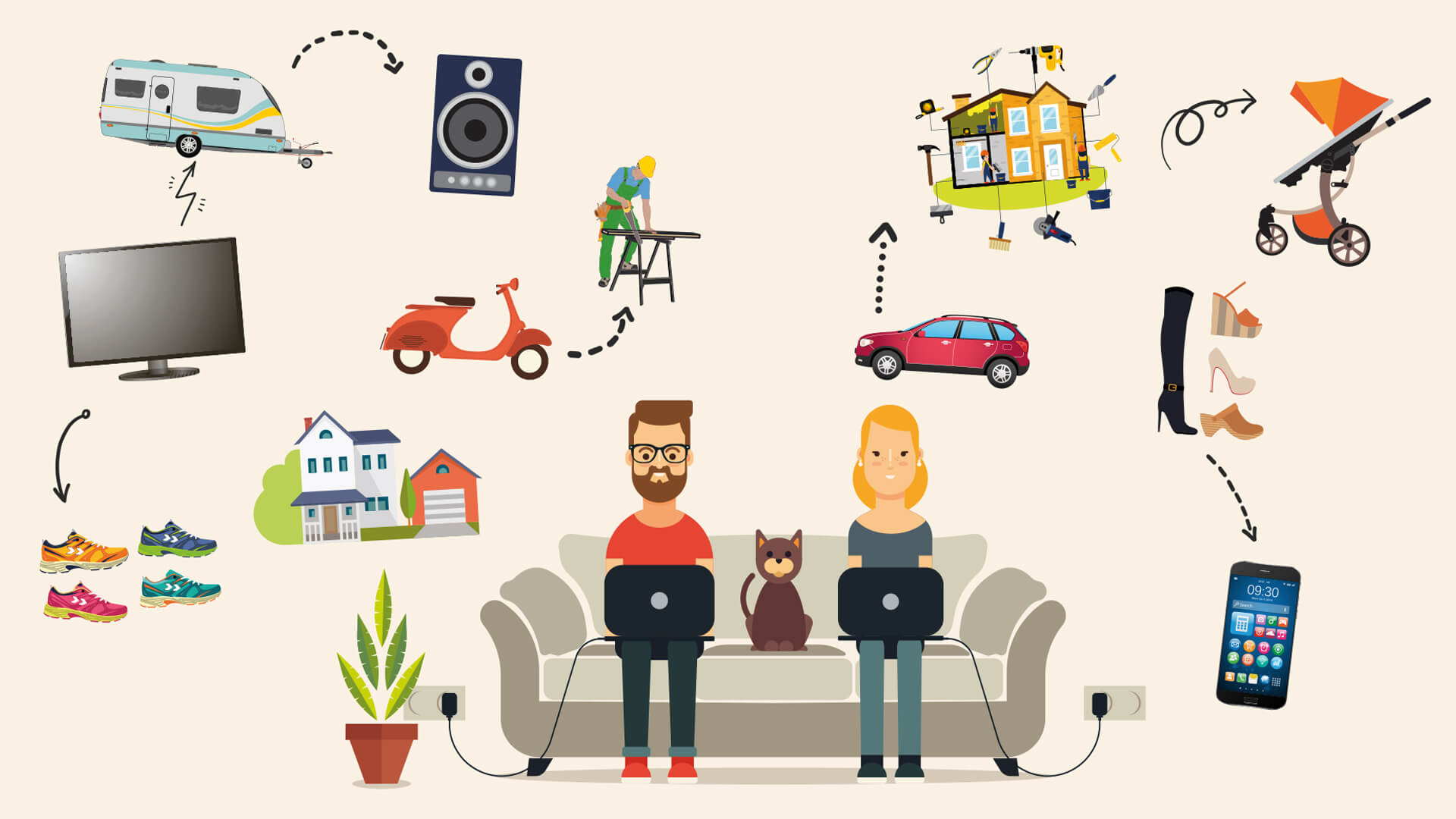
The data vision
When technology is fundamentally changing our world, one thing is sure: Only those who are bold enough to question the status quo will survive. Ovidiu Solomonov, dives into what the future might bring for digital marketplaces.
The amount of data collected every year increases exponentially – in 2015 we collected more data than in the history of mankind up to 2014. The ability to store and process this data increases exponentially – Moore’s law is (still) at work driving ever faster, smaller and cheaper hardware. Algorithms now exist that can crunch these vast amounts of data and learn on their own how to optimize for specific targets.
Step by step
This is why we are bombarded with news about smart cars, humanoid robots, and artificial intelligence. While it’s impossible to predict exactly what the future holds, one thing we know: the future will be discovered, step by step, by those who have the courage to experiment and disrupt the status quo.
Let’s think about what the future might bring for digital marketplaces where millions of people buy and sell goods every day. It’s not difficult to see how an image recognition algorithm could simplify ad insertion on marketplaces, but are there deeper implications on the very structure for these sites? Could this be not just a change of degree, but a change in nature?
Historically, marketplaces have been predicated on liquidity: you bring all buyers and sellers to one place and get them to trade with one another. The path to building such liquidity always starts with the supply side: you attract the sellers in a given segment, bring them buyers, attract more sellers interested in those buyers and yet more buyers interested in what the new sellers bring. This virtuous cycle makes perfect sense as sellers have an economic incentive that motivates them to incur the “cost” of listing their content in exchange for the promise of potential prospective buyers.
This is now changing with people increasingly spending their lives online and having more content than ever competing for their attention. They are no longer willing to invest the effort to search through generic content – they are increasingly expecting full personalization – what I need, when I need it.
Matching goods to people
Let’s try a mental experiment on what this exponential growth of data and processing power can mean for digital marketplaces: imagine a world where all goods are identified and their ownership is known, where people’s preferences, needs and desires can be predicted and where algorithms exist that can optimally match existing goods to people’s needs.
In such a world we would all be passive sellers: you would receive a message telling you that you might want to sell your current bike to someone else and buy the new one that you have always dreamt of in exchange of a small difference; swipe right and within 24 hours you have a new bike.
In such a world even the notion of ownership will change – as long as you can sell any goods at any given time for the “right” price, you are de facto “leasing” it for as long as you need it.
Is this a viable future? If, when the Iphone was launched in 2007, someone told you that within ten years, with one swipe, you could summon a car that drives itself to take you from point A to point B, would you have believed it? This is the power of exponential growth.
Let’s try to make a testable prediction: Within the next ten years marketplaces will have morphed from places where an “infinite” number of fungible buyers search through unique content, to algorithms/bots that push an “infinite” number of goods to the right person, at the right time. Demand side personalization will replace supply side scarcity.
Big is bad
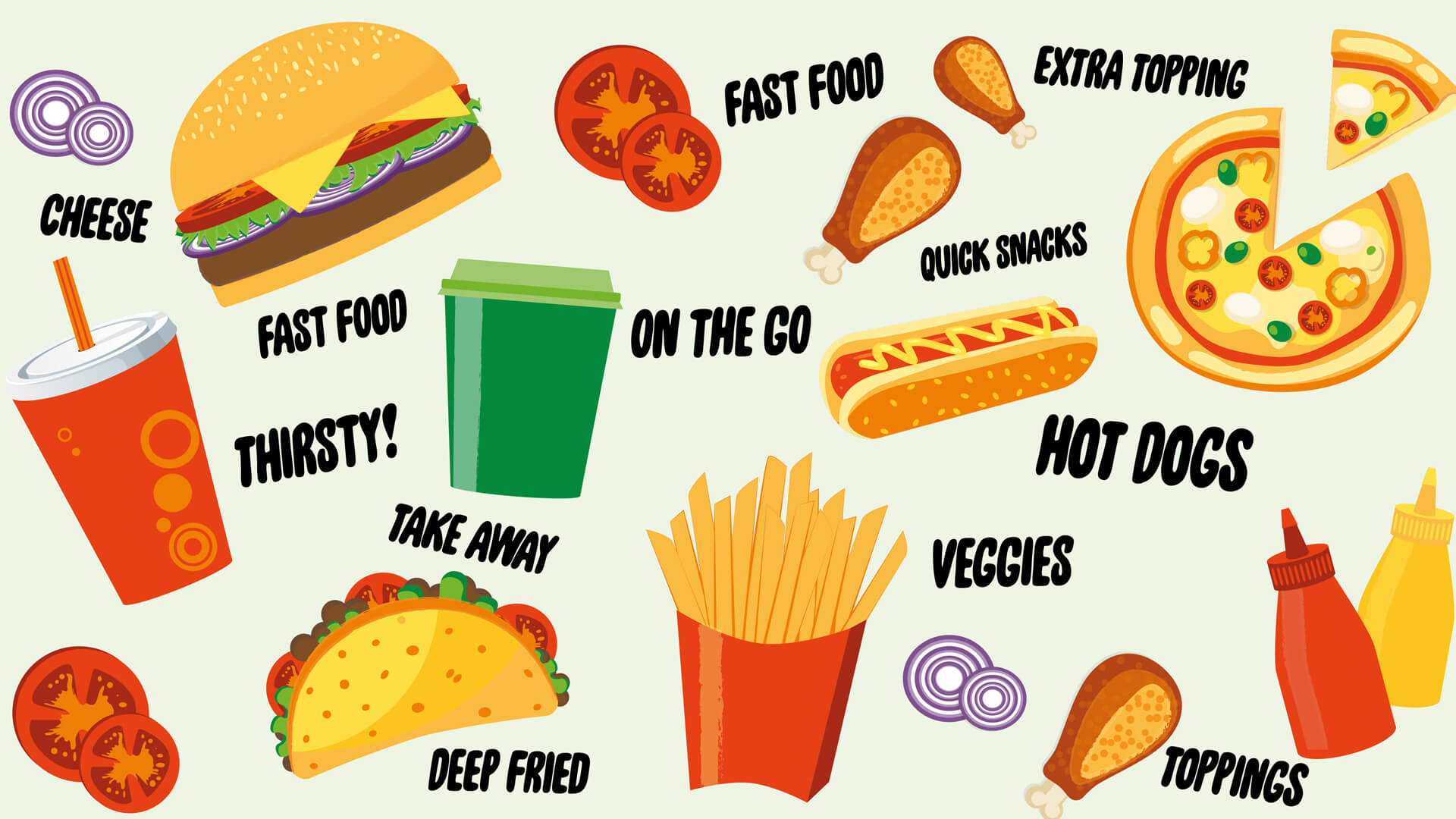
Big is bad
Maybe they look as healthy as ever, but the food giants are in serious trouble. They are threatened by a new generation of consumers fed up with standardized products of uncertain origin. Mats-Eric Nilsson, food writer and former managing editor at Svenska Dagbladet, tells us how Big has become Bad.
Ten years ago, when I was part of the editorial management team at Svenska Dagbladet, participating in various development projects, we regarded the largest British food chain Tesco as a shining and inspiring example, well worth a study visit to London. Here we had a large and extremely successful company, clever at understanding its customers, “consumer insight”, and also able to adjust to every shift in their demand.
Today this food chain is struggling with dwindling revenues, losing 6.4 billion pounds in 2014 forcing the company to close 43 non-profitable stores and their own HQ.
A change in mind-set
Even the largest supermarket chain, the American giant Wal-mart, priding itself on low prices, is struggling with serious problems, stagnating sales and shrinking market shares in the food segment. For over a decade the company has been at the bottom of the list for consumers’ satisfaction and must, according to the expertise, abandon its extreme focus on prices and change the entire mind´set among the staff. Similar problems exist in the whole food business and are also affecting the traditional purveyors to the food chains.
In May 2015 the business magazine Fortune ran an in-depth article under the headline “The War Against Big Food” which is the American over-all term for the food giants. The feature started like this:
“Try this simple test. Say the following out loud: Artificial colors and flavors. Pesticides. Preservatives. High-fructose corn syrup. Growth hormones. Antibiotics … If any one of these terms raised a hair on the back of your neck, left a sour taste in your mouth, or made your lips purse with disdain, you are part of Big Food’s multibillion-dollar problem. In fact, you may even belong to a growing consumer class that has some of the world’s biggest and best-known companies scrambling to change their businesses.”
Producers are aware of the problem
Such drastic statements may seem grossly exaggerated in order to create an interesting opening for the piece, but the American producers of packed food, who held their yearly conference three months earlier, would hardly agree. “Big” has come to equal “Bad”, lamented a representative of the giant Conagra that has lots of well-known brands. Another speaker feared that the growing skepticism towards the food giants might make the customers turn their backs on them for good. Denise Morrison, CEO of Campbell Soups said: “We understand that increasing numbers of consumers are seeking authentic, genuine food experiences, and we know that they are skeptical of the ability of large, long-established food companies to deliver them.”
Since 2009 the 25 largest food companies in the US have lost market shares to the tune of 18 billion dollars.
“I would think of them as melting icebergs”, one analyst said at the trade conference. “Every year they become a little less relevant.”
Still, the problems of today are nothing compared to those waiting round the corner. The latest generation of consumers, the millennials, have already put fear into the business. They are the age group born 1989-2000, thus being between 16 and 27 years old today. Pretty soon they will be the most important of the consumers’ groups and all those reports saying that these young customers are having, and will have, much stronger opinions and demands than their parents had, worry the food industry.
Suddenly they insist on being told where the food comes from and how it is produced. They like locally and traditionally produced food and try to avoid processed food and GMO. And since we are now talking of the largest generation in history – in the US they are 80 million people – the companies must adjust to the prevailing wind that is expected to blow for many years.
Smaller manufacturers doing well
The giant Kraft Foods, with lots of well-known brands, is doing away with artificial coloring and preservatives, as is Kellogg’s and many other producers. The world’s largest fast food chain Subway, which now after years of strong growth is facing serious difficulties, is promising to sort out their additives, while McDonald’s – which is not going well either – have stopped using chickens that have been treated with antibiotics.
While the faltering giants apply various defensive measures the smaller manufacturers of organic products, and other products that are perceived as more genuine and natural, are doing well. Earlier their items were sold in special shops for the very food conscientious people, but now they are also on the shelves of the big supermarket chains, including the low price ones.
One example of many is the now fast-growing family business Amy’s Kitchen which was founded in 1987 by Rachel and Andy Berliner and is named after their then newly born daughter. Their frozen vegetarian cooked meals – from burritos and pizza to Japanese teriyaki and Indian palak paneer – are prepared in traditional ways with basic ingredients of fresh organic vegetables. The onions are chopped by hand every morning and instead of buying ready-made tofu they are making it themselves in the traditional manner. Today the company employs 2.000 people producing 700.000 meals a day and in 2015, symbolically enough, they took over a factory building from Heinz, that can no longer find sufficient demand for their well-known frozen meals.
The big chains are feeling the competition breathing down their necks. Unless they make some radical changes they will, as American analysts predict, be hopelessly over-run in the not too distant future.
In this situation some of them have begun to play down their own brand into which they have invested so much. Seven years ago Starbuck’s opened some cafés in their hometown of Seattle without even the smallest of chain logos. In order to be inspired by genuinely personal places the chain’s representatives paid frequent visits to some of the city’s independent cafés. From one bar the entire interior decoration was copied straight off, including the fittings of the industrial lamps and the wooden chairs.
And in Sydney a couple of years ago McDonald’s discreetly transformed one of its “McCafés” into an anonymous café with the bland name The Corner. These giants, who a couple of years ago were boasting about every new unit they opened, have all of a sudden become embarrassed by their own size.
Next step in the vertical world

Next step in the vertical world
Specialized digital services are growing strong, but new user needs and behaviours are bringing new business models. Therese Ahlström Brodowsky, CEO of the car vertical Bytbil, looks into new possibilities in the niche market.
Where do you turn when you are considering a purchase of some kind? In general, any advertising space will probably suffice when you’re browsing for a baby stroller, a chest of drawers or a canoe. But when you are contemplating a major investment, say a house or a new car, you will probably be better off using a service specialising in that specific area.
Not least because in a rapidly changing business environment you will need the best advice available regarding which kind of ownership and financing model suits you besst. Let me explain:
Not too long ago, I used to rummage through the classifieds in the paper in a never ending search for homes, cars, travels etc. Mostly I wasn’t looking for anything in particular, rather just daydreaming about the house I could picture myself living in, the car I wanted to drive or the next holiday I wanted to go on.
A bygone era
Today those classifieds are but a fading remnant of a bygone era. One of the first victims of the digital revolution, the classified paper ads soon found themselves replaced by cleverly packaged internet based solutions. All of a sudden, buyers could search countrywide for houses, cars, travels, etc., browsing through pictures and dive deep into data and history.
Yet the world moves on. With the millennials coming of age, not only the advertising but the whole business is going digital. In my area, traditional car dealerships are facing challenges from the internet-based brokers such as Beepi, Shift and Carspring, offering risk minimized end-to-end solutions.
By connecting sellers and buyers over the internet, the online players tend to all cumbersome activities surrounding the purchase process (inspections, paperwork, warranties and even delivery), all while minimizing overhead costs by ridding themselves of any need of showrooms and salespeople. No longer do you have to leave your sofa in order to buy a used car. Haggling with a man in a moustache and a polyester shirt in a car lot is a thing of the past.
Still, this entails you actually buying and owning a car, something which is no certainty anymore, as the modes of ownership transform and diversify.
Collective ownership
Especially in urban environments everything from congested traffic to a lack of parking space drive a shift from personal to collective ownership, particularly where public transportation alternatives are available. Car sharing and rental solutions are gaining ground, appealing to people with occasional rather than daily transportation needs. Booking apps facilitate both accessibility and payment, whether it is a central car pool or a peer-to-peer based business model.
There are other ways of not owning a car. If you still want the unlimited accessibility of having your own car, but are less interested in the mundane hassle of services, repairs, insurance and similar paperwork, financial leasing might be an interesting alternative.
Having a leasing company actually owning the car, basically renting it to you long-term, is a way of lowering the risks of personal ownership. The lease package may include car service, insurance, warranties and other services at more or less fixed prices. When the lease expires, usually after 36 months, you simply return the car to the leasing company, without having to suffer the agonies often connected to trying to get it off your hands.
What we are seeing is a shift from the car as a personal asset and status symbol to the car as a commodity. The need for personal transportation has not lessened – the sales figures in the automotive industry have been steadily increasing over a long time – but the way we consume it is changing and diversifying. Not only does the digital revolution decrease the need for ownership, but technological advances such as self-driving cars may also be diminishing the actual sense of ownership. You will probably be less emotionally connected to your car as a passenger than as its driver.
Participation in such a dynamic marketplace requires agility and adaptability. Remaining simply an advertising site will not suffice. Instead, realising the potential as a connection between car consumers and service providers, regardless of the mode of ownership, will be crucial for survival and prosperity.
A variety of solutions
For a company like Bytbil, this entails being able to reach the car commodity consumers and being able to offer them a variety of solutions, be it the traditional ad network, leasing solutions or even car-pooling. As a specialist service provider, we need to face up to the ever-changing challenges, and possibilities, of the market.
Specialization requires a market complex enough to fund innovative business models. Just then the agility and adaptability offer a significant advantage above that of any generic actor. This is the key to be able to thrive and expand in a constantly changing environment.
Retention is king!

Retention is king!
75 percent of new app users don’t return. So stop looking only at downloads, CPI, visits or active users, there is really just one question to focus on – how do we keep our users engaged? Caroline Ragot is determined to act on app retention.
There are over two million apps in both the Google Play and the Apple App Store. On average we use between 25 and 30 apps a month. 87 percent of smartphone users use less than ten apps a day. Less than 25 percent of new users return the day after first use, which means more than 75 percent of users don’t come back. It’s pretty clear the big issue of apps is user retention. How do we keep our users engaged?
The same recipe
Mobile apps have already disrupted a few industries and it continues. Think about Instagram vs Flickr, Whatsapp vs SMS, or Waze vs Tomtom. We hardly use the second ones anymore and the first ones are now part of our daily life. Why? They are easier to use, they are more immediate, and get what you need in the moment.
Deliveroo is another example. It’s a food delivery app where you have a selection of premium restaurants’ menus in the same place. No need to have cash on you to pay the delivery guy. No need to give your phone number and spell your street name until the person on the phone gets it right. And with a quick look at the app you get updates on your delivery. It is as if Deliveroo knew exactly which small painful issues you used to face when ordering food the old way.
With Mytaxi you don’t need to look for a taxi stop, wait ages for a ride or pay with cash. Runtastic knows that the hardest thing about exercise is motivation, so the app tracks your progress, gives you rewards and companionship to boost your motivation day after day. If you think about it carefully, these apps have the same recipe for success. They use the same three ingredients, simplicity, context and real-time information to give us solutions to our little everyday problems.
This way they become part of our routine and make us change our daily behaviors. Routine is without any doubt the best friend of Retention!
UX, the secret weapon
Surprisingly, it is easy to make things complicated and hard to make them simple. This is why user experience design is so important when building an app. I consider UX as a secret weapon because it is still too often an undervalued discipline. It is all about listening to your users, again and again.
First you need to know if there is a real problem to solve. If your app doesn’t solve a problem it will be hard to succeed. When you know what your users’ pains are you can prototype a solution and then observe people using it. When you see people making mistakes and not using your app as you thought they would, you learn what you need to change. If your app isn’t easy to use people will get frustrated and won’t come back.
User experience is a mix of design and psychology. Psychology is key to understanding people if we want to modify their habits and behaviors. And disruptive apps are those that make you change your way of doing things.
You also need to know who is a valuable user for you. What do you need your users to do to make your business run? Any e-commerce app wants its users to place orders. It matters how many times they order and how much money they spend each time.
Marketing heating up
Then you need to figure out what your most valuable users do in the first seven to 15 days that the others don’t. Get your data analysts to help you with cohorts and median analysis and discover what is your aha moment – the instant a user understands the value of your product. If they do so they will come back! Chamath Palihapitiya declared that Facebook aha moment was “seven friends in ten days”. Next you get your product and marketing guys to work together and try to make users have their aha moment.
The bottom line
Stop looking only at downloads, CPI, visits, or MAUs, and start looking at Day-1, Day-7, and Day-30 retention rates. Retention rates are the only KPIs you should care about. If you get them right, the rest will follow!
Get to know your users

Get to know your users
Average numbers and large figures don’t really tell us much about our users. But these are the facts media houses have relied on for years when developing and evaluating. At Swedish newspaper Aftonbladet this is now changing – and they are getting to know their users for real.
At Schibsted, we have been working on how to become truly user-driven for several years. Two years ago Aftonbladet embarked on a journey to become an organization that bases everything it does on its users.
We established a vision: everyone working in the media house – from editors to developers – should have a shared and comprehensive picture of our users, based on data and user behavior. We should also have shared, comprehensible objectives and key numbers for each user segment, as well as tools and insights, so that we can address our user segments in real time.
With a shared vision of our users, we can muster our efforts to build the media house of the future, with more engaging and relevant products, and more loyal users.
To try to understand our users in depth, we looked at a year’s data, fully 25 TB of behavioral data from Aftonbladet. Initially, this involved segmenting our users based on loyalty, where frequency over a given time period was the best measure.
We grouped our users based on how often they return to us – from infrequent visitors, who visit once a month, to news junkies, who access us almost every day. We placed loyalty in relation to the level of commitment of the various behavioral segments and witnessed what is known as the Pareto principle: our most loyal users, who represent 20 percent of our unique visitors, account for 80 percent of Aftonbladet’s page views.
Our initial analysis and segmentation aroused an interest to dig deeper to understand and learn more. We then carried out five steps to finally identify Aftonbladet’s new target groups. The new target groups represent a platform for how we will build the new Aftonbladet, which will always act based on user insight and digital behavior.
These are the five steps:
1. Workshops with employees to define hypotheses about our users’ behavioral patterns.
2. Iterative data analysis processing, in which we stress tested our hypotheses about users’ behavioral patterns against actual behavioral data.
3. Clustering behavioral data, by which we identified ten significant behavioral segments in the traffic data.
4. In-depth interviews with actual users from each behavioral segment to understand the needs and motivations behind the different behaviors.
5. Quantitative surveys of actual users from each behavioral segment.
During the in-depth interviews and the quantitative surveys, we found the same motivations and needs behind many of the behavioral segments’ use of Aftonbladet. By clustering the ten different behavioral groups according to their motivations, we were able to establish four new target groups.
In early 2016, we developed strategies and key figures for each target group with the aim of building a more relevant experience for each group. Several product innovations based on these strategies will be launched in 2017.
Following readers in real time
In connection with the launch of the new target groups, we installed new dashboards throughout the media house where we can monitor, in real time, how our different target groups behave at Aftonbladet. We have also begun to steer our paid product Plus’ fixed sales messages towards different target groups, resulting both in higher sales and increased appreciation.
But this is only the beginning. We have now appointed a manager for our users, who will drive the product and business development process ahead within the organization. It is up to Aftonbladet as a whole, from department managers to editors and reporters, to take responsibility for ensuring that we move towards a more user-centered approach.
The method of combining dynamic online behavioral data with qualitative and quantitative interviews is unique and we will now scale up the process and the segmentation model to include Norwegian mediahouse VG. We have a hypothesis that VG has the same behavioral segments as Aftonbladet. If this proves to be true, we will be able to derive considerable benefits for our product and business development.
With a shared view of our users, we within Schibsted will be able to muster our efforts to build the media house of the future with more engaging and relevant products, and more loyal users.
Seven steps to become a user-driven organization:
- Do not wait for the perfect data or the right tools. They do not exist! Start with what you have
and make the best of it. - Take advantage of the insights about customers and users that you already have. Otherwise you
might find patterns that are incomprehensible and difficult to interpret. - Ensure that you have a dynamic data model. Unless you can follow your users over time the
segmentation will quickly become outdated. - Talk with your users to understand their behavior patterns and underlying motivations and
needs. If you look only at behavioral data, you will only see what users do, without understanding why. - Visualize insights and real-time data to your entire organization. If more people have access to
data and user insights, decisions will be taken on a day-to-day basis. - Develop goals and strategies for each user segment together with key individuals in your
organization. This is a good way of building commitment around your customers and users. - Build a story about each user segment. This will help your entire organization becoming
more user-driven.
A perfect match

A perfect match
Matching a brand’s expertise with a publisher’s storytelling and distribution has turned out to be a success. Content marketing fulfills publishers’ needs for new business models and is all about leveraging competitive advantages.
Since the New York Times in 2014 launched their in-house content marketing department T Brand Studios, publishers all over the world have followed in similar fashion: producing and distributing content on behalf of advertisers.
Commonly categorized as both native advertising and branded content, it sure has been subject to much debate in the media industry. Despite that, even the most conservative of publishers are jumping on the bandwagon.
Worldwide native advertising spend is expected to double – from 31 billion USD in 2015 to 59 billion in 2018, according to Adyoulike, a native advertising network. While native advertising as a whole does not solely include publishers’ content marketing efforts, it says a lot about the direction we are heading in.
A staggering result
For an advertiser to have a content strategy is perhaps as given as a management consultant’s powerpoint, including the word “synergy”. In Schibsted, publications were quick to launch branded content departments. One of VG’s first content marketing pieces was an article for movie distributor Nordisk Film, and their movie “The Wave”. The article quickly generated more than 300,000 page views, both from VG.no and viral traffic. Considering the population in Norway is 5,000,000, that number is quite staggering. While we don’t see numbers like that every day, they are not uniquely spectacular either.
Users visit online newspapers to be updated, informed, inspired or engaged – and do so by reading, watching and listening to content, in some form. Therefore, it should not come as a surprise to anyone that branded content click rates are outperforming those of display advertising.
What has been more surprising though, is how often branded content is head to head with editorial content. More often than not, VG’s branded content campaigns enter the top 20 list of most clicked content from the front page.
Accepted by users
Time spent on articles and completion rates on videos are comparable to editorial content. Articles shared from VG’s Facebook account usually gain the same amount of reach and engagement as expected from editorial posts, in some cases even more. There is no need to doubt whether the user accepts the branded content format. In the age of user experience, branded content clearly fits the bill.
Transparency has been the main talking point so far. It shouldn’t be. First of all, labeling the content should not be hard, at least not while we adapt a new format over time. Second, there are no incentives not to be transparent; in fact, the whole purpose for the advertiser is that the reader connects the content to the brand. Although fundamentally important, expect less talk about transparency as publishers improve their labeling standards and users become more used to branded content as a format.
A core competence
Seen from a publisher’s business perspective, branded content is basically all about leveraging competitive advantages.
Publishers are experts at storytelling, and at distributing content to their audiences. Branded content is a publisher doing what she is best at, but in another format. It is a business model that plays to your core competency.
For advertisers, building brand by telling stories makes sense too. A 2015 Boston Consulting Group study showed that 60 percent of Americans do not believe traditional advertising is based on facts. That makes alarm bells ring for any advertiser. How do you sell your products to an audience that do not trust you?
At the same time, 96 percent of the respondents said that their trust of a brand increases when a brand tells them something without trying to sell them something. If there is one thing that the content marketing trend has shown us, it is that brands too have every chance of telling great stories. Matching a brand’s expertise with a publisher’s storytelling and distribution is by all means a good combination.
As long as user experience remains uncompromised, with clear labeling and good content, branded content will continue growing. The users get more relevant ads. The advertisers get a great way of communicating with their audiences. And the publishers get a digital and profitable business model. Everybody wins.
6 pieces of advice to native advertisers
Choose a relevant destination and cooperate
When choosing where to distribute your message, make sure that it is where your audience is and that it is the right context for your brand. You also need to find out what type of content that works best in the context– everything from topics, language to length and structure. Successful campaigns are sprung out of successful collaborations between publisher and advertiser.
Dare to be customer-centric
Instead of thinking primarily about how your ad is going to drive sales, think about how this piece of content is going to meet the needs of your potential customers. What content can you provide that will interest, inform and provide value to your audience and leave them wanting more?
Dont talk about yourself
Don’t promote your company too much, but tell a story to achieve your goals. Native ads that have an inside-out perspective, or try to close a deal straight away, rarely works.
Be transparent
Make sure the users understand that it is an ad that they are clicking on and consuming. Taking shortcuts only lead to bad will for all parties involved.
Have patience
Native advertising is a long-term commitment and investment. It seldom pays off quickly. Campaigns are usually most effective at putting your brand top of mind, not driving immediate conversion, although there are exceptions.
Think like a reader
Last but not least – ask yourself if you would click on the content? Would you enjoy consuming it? And would you even share it with your friends? If you cannot say yes to at least two out of the three questions you still have work to do.
Josefine Kvarnström
Head of Schibsted Content Studio Sweden
Stay ahead in sales

Stay ahead in sales
What’s going on in the advertising business? These are the trends to watch, according to Schibsted’s ad and sales experts.
1. New tools for local advertising
Advertisers right now are very eager to manage their conversation funnel by reaching the right target group at the right time. This is getting possible by the prospect of local and hyperlocal advertising – geo-targeted ads that can be served to customers. A new tool, developed by Leboncoin and Schibsted Products & Technology, will allow precise targeting of adverts for hyper local groups, local groups, and a SEA (search engine advertising). This will be available for agencies and large advertisers. At present only very broad geo-targeting tools are available to advertisers, but new technologies and tools like this will soon be serving ever-more relevant ads to ever-more finely granulated groups of potential customers.
Fabien Scolan
Advertising Director Leboncoin
2. The Future of Quality Advertising is also about the user
Digital advertising has been under extreme development over the last years, not only in terms of targeting capabilities but also in ad sizes and amount of display banners on sites across the web. Banners heavy with data, intrusive takeovers and long pre-rolls on video clips have been introduced at the cost of user experience and with the rise of ad blocking software. Now we need to take care of the problem at its roots – only load ads when it´s absolutely necessary, minimize tracking and last but not least; adapt the ad-experience to the content on your site and the modus your audience is in.
Alexander Rydfjord
Commercial Head of Digital VG
3. What will Virtual Reality mean for advertising?
The first experience with the Oculus Rift VR glasses will knock you out of the chair. Literally. The question is how you as a brand will knock your customers out of their chairs. For brands, VR will be a tool to tell a powerful story that affects our emotions in a deep and profound way. Great content will engage users, whether it’s getting in the driver’s seat of the latest Volvo or furnishing your living room with Ikea products. As for publishers, they need to start generating great VR content for users to consume. In the same way users today accept watching a short pre-roll ad before an Aftonbladet TV clip, brands can serve VR experiences before or inbetween publishers VR content and thus publishers can start capitalizing on this new technology too.
Tomas Schultz
Business Strategist, Schibsted Sales & Inventory
4. How will The mobile continue to evolve?
Our mobile phone is the one thing we don´t leave home without, we always carry it with us wherever we go and whatever we do. For advertisers this brings an opportunity to be present with the consumer wherever they are physically. At the same time, when consuming media on mobile, advertisers have limited time to get users´ attention putting pressure on adaption to the mobile behavior. Research shows that mobile advertising has a reminding effect on the consumer, it drives purchase intent. The next step is to use this knowledge and place the mobile in the center of the media mix in order to maximize on the effects the platform enables.
Estelle Douglas
Business Strategist Mobile, Schibsted Sales & Inventory
5. The rise of the multi specialized generalist.
In a world that becomes more and more complex and when choices seem to be endless, the need for knowledge to be able to make the right choices, is high. Earlier the different roles in the media market had their set skills and competences. But now you need a broader understanding on the whole media market independently on where in the market you are. Ad agencies, media agencies or content providers – it is now highly likely that the most successful players have staff that is competent in fields that are beyond their main focus. Without it you will provide less quality in the work you deliver to your customers and the products you develop.
Sofia Nyctelius Krook
Director of Marketing & Competence, Schibsted Sales & Inventory
6. Marketing: Everything is new – nothing is new
The digital revolution creates new opportunities for advertisers to reach their audience with the help of data, targeting and programmatic ads. But at the same time nothing has changed. As a marketeer, you must still fill your brand with associations that differentiate you from competitors, and address three primary consumer needs: image, security and simplicity. Brand relations are not shaped in smartphones, but in our minds.This is good news for wise advertisers. By understanding customer needs and their media behavior, they can use new technology in the best way. The marketeers who are best at navigating in the landscape of brands, people and technology, will be the winners of tomorrow.
Joakim Claesson
VP Strategy and Sales Support, Schibsted Sales & Inventory
Driving innovation

Driving innovation
The competition for the best entrepreneurs and intrapreneurs has never been tougher. In the era of digital transformation acquisitions and investments are the way to innovation and development. But how do you win the game? This is the Schibsted recipe for investment success.
Embrace constant change
A culture of constant change and strong collaboration enables you to experiment with new business models and ventures. Behind every success there are vast amounts of new experiences and straight out failures. The nature of experimenting with new products, services or technology is that most fail and some succeed. Regardless of the turnout, you learn from all of them.
Partner with great teams
Formulate an investment thesis around why and how to invest, analyze macro and business trends. Form investment themes based on your strategic focus areas. Invest in specific or across all stages of a company’s life cycle but make sure that the companies you invest in have a unique product, service or value proposition and the potential to become a market or industry leader. Most importantly, partner with great founders and teams and let startups be startups and entrepreneurs be entrepreneurs.
Play offense, not defense
Make up your mind if you wish to defend your existing business, or create new business opportunities, by investing. If you choose the latter, prioritize investments in ventures that extend your product, business, market segments, geography or perhaps even takes you into new industries. Ultimately you should aim for, and dare to, disrupt yourself before someone else beats you to it. In the rapidly changing world we live in, the biggest risk of all is to take no risk, to stop experimenting, stand still and accept status quo.
Invest for the long term
Stand out and differentiate from other types of investors by making strategic, long-term investments with the goal of building successful companies together with great entrepreneurs. Companies you can follow and help grow over a long period of time, companies that will shape the future of their respective industries and eventually the future of yours.
Add real value
What are you bringing to the table? As a part of a larger group, entrepreneurs get access to an exclusive network of other entrepreneurs and professionals with experience in building, growing and expanding companies across the world. A network they will surely contribute to as well as extract knowledge from. In Schibsted, portfolio companies operate independently and are run by their respective CEO’s and founders. Being a part of the Schibsted family means getting access to and being able to leverage infrastructure, technology, data and the relationship to all our users.
Finding the next big bet
When everybody is an entrepreneur and all industries are in various stages of digital transformation, there is no lack of investment opportunities. However, the odds are often against you. A rough estimate is that only 1 in 100 startups grow to become great companies. Use your network and get help finding the ones that stand out. At Schibsted, we want your help finding them: If you see a tiny company taking off without anyone noticing. Or if you meet a team or founder with high potential, let us know! And we want to find the next big thing with the help of our extended Schibsted family.
Do you have an investment opportunity for us? Tell us about it by emailing .







